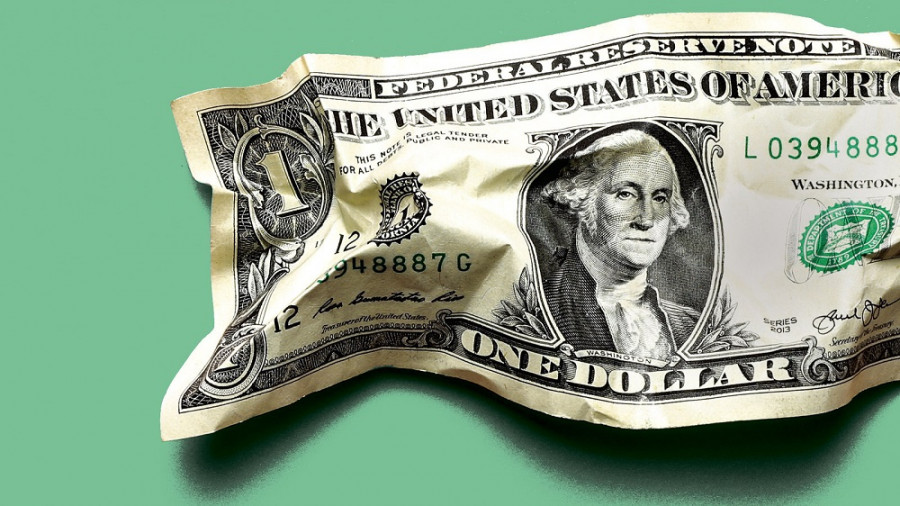Last week, EUR/USD tested the 1.0515 level, marking its second attempt this year to break into the 1.05 range—the first occurred in January when buyers reached 1.0534. Both attempts failed. Traders could not break and consolidate above the 1.0520 resistance level, which aligns with the upper line of the Bollinger Bands on the daily and four-hour charts. Now, the price is gradually slipping downward toward the mid-1.04 range.
Interestingly, this decline comes despite strong ZEW indices published Tuesday in Germany. For instance, the German business sentiment index surged to 26 points in February, exceeding analysts' expectations of 19 points. This is the highest reading since July 2024. The eurozone-wide business sentiment index from ZEW also showed an upward trend, rising to 24.2, marking its third consecutive month of growth.
However, EUR/USD traders ignored this release, focusing instead on recent Federal Reserve, largely hawkish statements and growing geopolitical tensions related to Trump and U.S. trade policy. Last week's market optimism has now faded. Recall that traders previously reacted positively to the postponement of reciprocal tariffs (Trump tasked a working group with reviewing the issue until April 1, promising country-specific proposals). This led to temporary pressure on the U.S. dollar. However, such fundamental factors tend to have short-lived effects, especially since the threat of tariff imposition remains.
New reports suggest that the European Union may retaliate in this trade conflict. According to the Financial Times, the EU is considering banning certain U.S. agricultural imports, including soybeans, due to pesticide usage banned in Europe. This is a direct response to Trump's criticism last week regarding trade restrictions on American goods (he specifically cited the EU's ban on U.S. shellfish exports).
These developments have dampened risk appetite in global markets. Moreover, recent Fed comments on the CPI and PPI reports in the U.S. have added pressure on EUR/USD.
Fed Governor Christopher Waller stated that the Fed will only lower rates if inflation moves toward the 2% target.
Currently, inflation in the U.S. is moving in the opposite direction. The January CPI jumped to 3.0% YoY, the highest level since June 2024. Meanwhile, the Producer Price Index (PPI) also exceeded expectations.
Waller's remarks confirm that the Fed is in no hurry to cut rates, reinforcing expectations that the central bank will maintain a wait-and-see approach.
Other Fed officials share this view. Governor Michelle Bowman stated on Monday that further rate cuts require "greater confidence in inflation slowing down." She also noted that holding rates steady allows time to assess economic activity and the impact of White House trade policies on the domestic economy.
According to the CME FedWatch Tool, the probability of a 25-basis-point rate cut in March is just 2%, for May it's 17%, and for June it's 42%. These figures confirm that the market does not expect a rate cut before mid-year. Recent hawkish Fed comments have only strengthened this outlook.
In my opinion, the strong growth of the EUR/USD pair that we observed last week was based on rather shaky grounds. The postponement of reciprocal tariffs by Trump is certainly a positive signal, but it is only a temporary measure. This fundamental factor is not sustainable enough to support the EUR/USD pair in the long term. Meanwhile, the more traditional fundamental indicators, such as the acceleration of the CPI and PPI and the moderately hawkish stance of Fed representatives, favor the US dollar.
As a result, long positions appear to be unreliable. When it comes to short positions, decisions can currently be made "at your own risk." On one hand, EUR/USD buyers have failed to break through the resistance level of 1.0520, which is the upper line of the Bollinger Bands indicator on the H4 and D1 timeframes. On the other hand, the pair remains within the Kumo cloud and between the middle and upper lines of the Bollinger Bands on the daily chart. This means that buyers have not managed to confirm the strength of the upward movement, but sellers have also not been able to take control.
Selling can be considered either from the current levels (which is quite risky) or after the pair falls below the support level of 1.0410, corresponding to the middle line of the Bollinger Bands on D1 (a more reliable option). The potential targets for a downward movement are 1.0350 (the lower boundary of the Kumo cloud) and 1.0300 (the lower line of the Bollinger Bands on the same timeframe).













